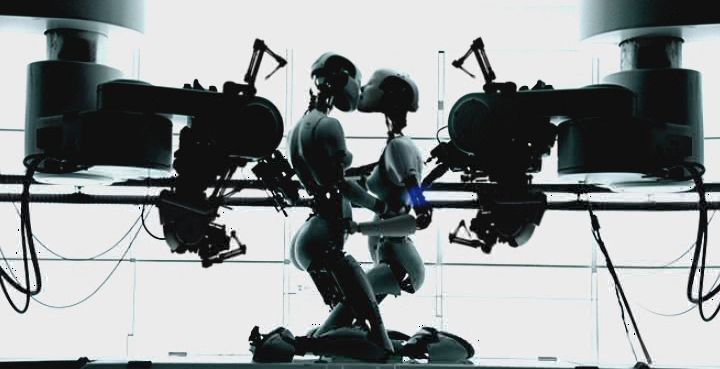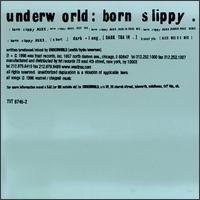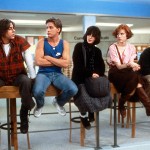10 Essential Alternate Version Songs

Hemmed in by studio time, on-hand recording media, label schedules and demands, and the cost of staff and session players to help put it all together, musicians sometimes find themselves feeling they have limited opportunities to perfect the sound of their songs before committing them to final mixdowns. Who knows how many bands sense that they left “better” takes or mixes on the shelf, to be exhumed only on the overpriced box set 15 years from now? Rare are the times when artists get to revisit a song and not only release it in a new context, but have it be recognized by fans and critics as arguably better than the first go-round. R.E.M. did something like this, kicking off their careers with the world-beating HibTone single “Radio Free Europe” before a more ambient mix opened Murmur two years later and cracked the Billboard charts. So did U2, sneaking a soft intro version of “Until the End of the World” onto a film soundtrack just before the definitive version appeared on Achtung Baby. Whether it’s a savvy or lucky moment at the mixing console, a track placed in the hands of a superstar DJ, or a live performance that renders the studio cut obsolete, here are 10 of Treble’s favorite alternate version songs—hopefully they’re yours, too.
 Simon and Garfunkel – “The Sound of Silence”
Simon and Garfunkel – “The Sound of Silence”
Original album version – from Wednesday Morning, 3 AM
(1964; Columbia)
These days, folk rock tunes are a dime a dozen but that wasn’t always the case. It wasn’t until 1965 that Bob Dylan first began experimenting with edgier, rock-influenced arrangements, purposefully mixing the two elements for a new effect. But one of the genre’s most recognizable staples, Simon and Garfunkel’s “The Sound of Silence,” took a much less natural route to get there. Originally written for the duo’s commercially unsuccessful 1964 debut, the song’s somber mood matched it’s subject matter, heavily influenced by the assassination of John F. Kennedy. It was Tom Wilson who, inspired by “Like a Rolling Stone,” booked a session to record the overdubbed bass, drums and electric guitar heard on the single that would eventually hit the #1 spot and bring about the duo’s reunion and the rushed recording of Sounds of Silence. My personal preference is for the acoustic original, but it’s hard to argue against the overdub’s significant contribution to the band’s prolific trajectory. – ATB
 The Beatles – “Revolution”
The Beatles – “Revolution”
Single version – B-side of “Hey Jude”
(1968; Apple)
Everything you can do, The Beatles can do better. Most of the tracks in our list exist in pairs, but this John Lennon composition actually became a trio of related songs. He had originally envisioned a long experimental piece that started out as a conventional blues number before veering off into avant garde territory. From a variety of sessions and takes the band assembled, and then cut up, what would become “Revolution 1” and the legendarily questionable “Revolution 9” on The White Album. Lennon wanted “Revolution 1” to be a single, but the rest of the band convinced him it was too slow and they rerecorded it in heavy, fuzzed out, garage rock style. That ended up as merely a b-side to the Paul McCartney vehicle “Hey Jude” (which actually came out before The White Album), but saw new life on the 1967–1970 and Past Masters compilations. Its popularity driven home by its infamous use in a Nike commercial without Yoko Ono’s approval, this is the version that AOR and oldies stations play all the time. – AB
 Cheap Trick – “I Want You To Want Me”
Cheap Trick – “I Want You To Want Me”
Live version – from Cheap Trick at Budokan
(1979; Epic)
Early on, when this top 10 list was proposed, one of the guidelines put in place was for writers to avoid live versions of songs. And yet, I ignored that directive readily and without hesitation, for one simple reason: “I Want You to Want Me.” Cheap Trick’s original version from In Color is a good song — a song that’s easy to love. But it’s no match for the even more dynamic live version. It’s louder, it’s faster, it rocks harder, and finds the Chicago power-pop group backed by a series of rhythmic cheers from the crowd. No disrespect to the original version, but this blazing, guitar-forward live version is the definitive version for the simple reason that it just packs that much more of a punch. That, and it’s got that fun little intro from Robin Zander: “I want you to want… meeeee!” – JT
 Psychedelic Furs – “Pretty In Pink”
Psychedelic Furs – “Pretty In Pink”
Movie soundtrack mix – from Pretty In Pink
(1986; A&M)
Hardcore fans of the London New Wave band probably prefer the 1981 original of this classic from their Talk Talk Talk album over the 1986 re-recording. The first version is full of gnarly effects-laden guitar and keys, and backs up a story about sexual desperation with some dark Richard Butler poetry submerged in the mix at its conclusion. The second was created for the John Hughes film it inspired, and it was significantly cleaned up in the studio: The guitars are a little muted and glossier, there are supporting horn parts, and Butler’s new vocal riffs at the end sound more like neat lyrical tie-ins to the Brat Pack film. (Frankly, the song’s original theme doesn’t seem to jibe with Molly Ringwald’s good girl image in the movie.) Still, aided by its presence on one of the great soundtracks of all time and backed with another Psych Furs favorite of the day, “Love My Way,” the new version of the single vastly outperformed the old one on the pop charts. – AB
 Elvis Costello – “Green Shirt”
Elvis Costello – “Green Shirt”
Demo version – from 2 1/2 Years
(1993; Rykodisc)
Elvis Costello and the Attractions’ “Green Shirt” is a spectacular little pop song — a pulsing, keyboard-heavy new waver that exercises patience over immediacy. Not that it’s short on hooks in any way, or for that matter, a wonderful arrangement. But in the same way that certain listeners prefer the Brian Wilson piano demo of “Surf’s Up” over the Van Dyke Parks arrangement on Smile (though I personally don’t), it’s hard for me not to favor Costello’s early acoustic demo of the song. A good minute shorter and more immediate, it’s essentially rendered a punk song in this version, which was recorded before the studio track on Armed Forces, but released later, both on the 2 1/2 Years box set. It also appeared on the expanded reissues of This Year’s Model, and not Armed Forces, which is notable; it sounds a lot more in line with the more visceral new wave rave-ups on that album than the one most listeners know. – JT
 Nirvana – “About a Girl”
Nirvana – “About a Girl”
Unplugged version – from MTV Unplugged in New York
(1994; DGC)
After MTV introduced its Unplugged series in the 1989, the cable network — which then still maintained a heavy focus on music programming — stuck mostly to acts that still made logical sense if you traded their electric guitars for acoustic ones: Eric Clapton, 10,000 Maniacs, Sting, R.E.M. and Neil Young, to name a few. And despite a handful of holdovers from the hair-rock era (Winger, Slaughter, Ratt), no artist seemed quite as risky as newly crowned grunge superstars Nirvana. The move proved surprisingly successful, showcasing the Seattle trio’s versatility as well as the melodic base behind many of their otherwise supercharged rock anthems, including “About a Girl,” the performance’s only inclusion from their 1989 album Bleach. With the tempo dropped slightly, and Dave Grohl trading his sticks for brushes, the new take shone a slightly prettier light on the track, and in turn became the lead single for the album. While the original version is certainly good, pop culture at large decided its acoustic counterpart was the definitive version. And frankly, it’s hard to argue against that. – JT
 Underworld – “Born Slippy .NUXX”
Underworld – “Born Slippy .NUXX”
(1995; Junior Boy’s Own/TVT)
How does one of your genre’s biggest songs not land on either a cult classic album or a fan favorite, but somehow between them? I’m not sure in which branch of rocket science you’d solve that problem, but London intelligent techno act Underworld managed the feat. In 1995—after Dubnobasswithmyheadman and before Second Toughest in the Infants—the trio of Karl Hyde, Rick Smith, and Darren Emerson released a standalone single called “Born Slippy,” a track with two competing and insistent musical lines: one of treble-heavy percussion, the other bright, chiming synths. One of the mixes on the b-side, its suffix borrowed from some of the band’s computer files, felt like a wholly different song instead of a mere rebuild. An echoing jackhammer of a drum base anchored anthemic keyboard stabs and Hyde’s yelled pisstake on beat poetry; his “lager, lager, lager” refrain was merely a result of him losing his place in the lyrics, and as a functioning alcoholic it upset him that some fans used that line to justify adopting the track as a high-tech drinking song. Filmmaker Danny Boyle must have sensed these competing qualities when he used this version during pivotal moments of 1996’s Trainspotting and included it on the seminal movie soundtrack. Subsequent interest in this mix exploded: it became the A-side of a few singles itself, and many other releases and references that followed actually drop the”.NUXX” from the title. That perpetuates an illusion that this is all that exists, even though it may be all any electronica fan needs. – AB
 Beastie Boys – “Body Movin’”
Beastie Boys – “Body Movin’”
Fatboy Slim Remix
(1998; Capitol)
After Norman Cook left his gig as bass player for The Housemartins, he embraced technology and the art of the DJ. With a long stretch of production credits and his own releases in the back half of the 1990s, he ended up largely defining the big beat era as Fatboy Slim. In the middle of this ubiquity, Fatboy was tasked with remixing the second single from Hello Nasty, quite possibly the most immediately successful Beastie Boys album. He replaced their whistle-while-you-work samples with signature sounds from his boomin’ system. Glitched vocals, synths stuck in whirring holding patterns, and punchy rhythm tracks lifted from leftfield sources like The Byrds pushed the Beasties’ existing groove into the red. This dense revision dominated modern rock radio, and was used in the hammy music video. It was a watershed moment when one crossover crossed over another, an electro-rap-rock combo that amounted to a summer music festival 5:33 long. – AB
 Björk – “All Is Full of Love”
Björk – “All Is Full of Love”
Video version
(1998; Elektra)
Björk is no stranger to the remix — essentially all of her singles have equally interesting remixed counterparts, and many such innovative reworkings from 1995’s Post ended up on an equally strong set titled Telegram. In 1998, however, when Björk released the single “All Is Full of Love,” the version that ended up scoring a romance between robots in the video wasn’t actually the same mix from her 1997 album Homogenic. Here’s where it gets interesting; the version that’s on the album is, in itself, a remix by Howie B, and the “Video Version,” oddly enough, was the first version of the track, produced by Mark Stent. Why the swap? Hard to say, though the more sedate version by Howie B does close the album with more atmosphere, making it a more natural choice for a comedown. But as a standalone song, the Video Version is more accessible; it has beats, for starters, plus some mesmerizing electronics that make it a more natural fit for a single. Either way you go on this one, you get a fantastic song, but in hindsight, it does make sense why one was chosen as the A-side, and one the album closer. – JT
 Gorillaz – “19-2000”
Gorillaz – “19-2000”
Soulchild Remix
(2001; Virgin)
If you know of the existence of an earlier version of a song, and yet never hear that version on the radio, you’ve pretty much guaranteed filling a slot on this list. Damon Albarn’s first post-Blur all star project struck gold with the lead single from their self-titled debut, “Clint Eastwood.” The second single, “192000” began life as a slow groove full of gurgling organ riffs but was plucked from Gorillaz’s catalog at the time by producer Damien Mendis to be reconfigured for crossover potential. Mendis sped up the song, replaced the vintage sounding keys with techno beeps and bloops, added harder percussion loops, and had Albarn redo his vocals to match the new sounds. The results were so radio-friendly and joyous that Gorillaz and their label, Parlophone, ended up pushing only the remix for radio stations and licensing for the screen. Why you don’t go into songwriting and recording shooting for critical mass in the first place is beyond me, but I can’t look this gift horse of production in the mouth. This track is the jawn. – AB
You might also like:




